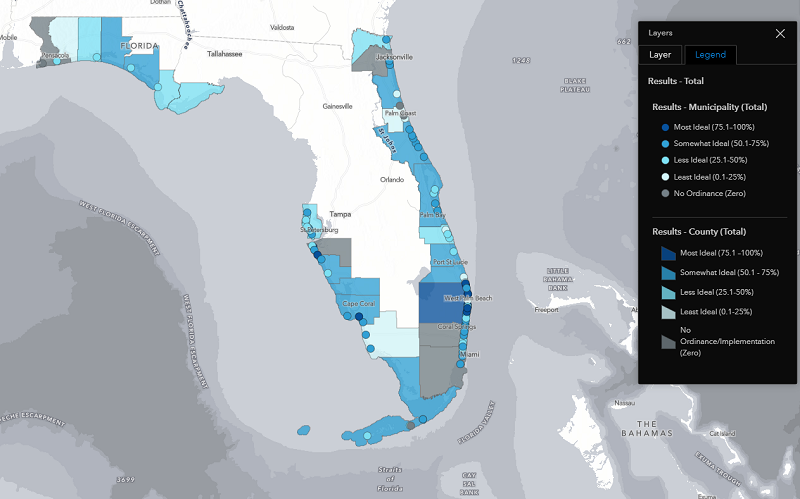You can help to prevent sea turtle disorientations on our beaches.
Being aware of and adhering to your local lighting ordinance is one of the best ways to help Florida’s sea turtles. More than 100 counties and municipalities in Florida have established local lighting ordinances, but the majority have not been updated in decades, despite significant advances in lighting technology and the understanding of sea turtle disorientations. In December 2020, the FDEP adopted an updated Model Lighting Ordinance for Sea Turtle Protection (Rule 62B55.004, F.A.C), reflecting these advances. Some coastal governments have approved updates to their ordinances using this Model as a guide, but many have not revisited their language or enforcement strategies. Together, representatives from Sea Turtle Conservancy (STC), National Wildlife Federation (NWF), and Florida Fish and Wildlife Conservation Commission (FWC) analyzed how close current sea turtle lighting ordinance language and implementation strategies for all coastal governments in Florida compared to the State’s Model Lighting Ordinance. We have created an interactive website that displays the results of our study and provides helpful resources about wildlife friendly lighting to community members.
Explore the online tool: https://experience.arcgis.com/…/page/About-the-Project/
Here are additional ways to help protect sea turtles.

- Go out to the beach at night and identify what lights on your property are visible from the beach. If the lights are not needed for safety, simply turn them off. If the lights cannot be turned off, shield, redirect or lower the height of the lights so they are no longer visible from the beach.
- Replace problematic lights with sea turtle friendly fixtures designed to direct light where you need it and away from the beach. To find examples of sea-turtle friendly fixtures, click here.
- Use long wavelength bulbs in shielded, downward-directed turtle friendly fixtures at lowered mounting heights.
- Reduce interior lighting problems by applying window tint at a 15% light transmittance level or close opaque curtains or blinds after dark to reduce the amount of visible light reaching the beach.
- If your town decides to upgrade its street lighting, contact representatives and encourage them to use wildlife certified, shielded pole fixtures and lowered mounting heights.
- Do not use flashlights or cell phone lights while walking on the beach at night.
- Place lighting on motion-sensors when possible.
- When choosing lighting for your coastal property, please remember these three simple rules: Keep it low, keep it shielded, and keep it long.
